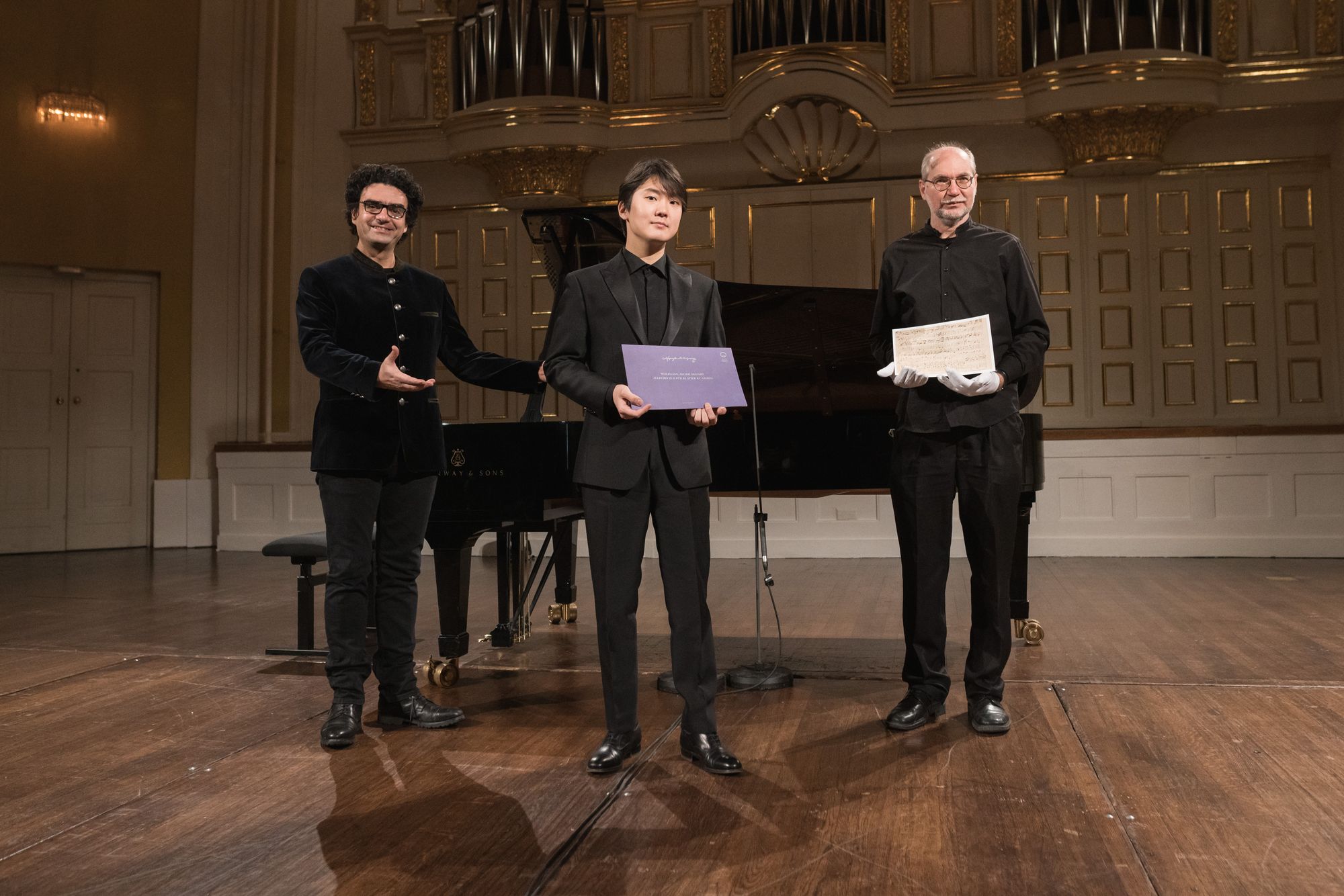94 Seconds of New Mozart: A Mozart Premiere

On February 27, 2021, the web-based platform DG Stage brought is that rarest of phenomena, a modern premiere of a piece by Mozart, performed in the Great Hall of the Salzburg Mozarteum, on Mozart's 265th birthday. It only lasts a minute and a half, and is known as the Allegro in D, K626b/16. The whole event lasted 45 minutes, though - including two full performances of the new piece, a complete performance of the F major Sonata, (No. 12, K 332) and two short pieces, the Piece in F, K 33b and an Allegro in C, K deest.
The feeling of excitement and celebration was palpable, and anyone looking to lift their spirits in a lockdown world is recommended to watch this purely for the sheer electricity of Rolando Villazón's enthusiasm. Best known as a singer, Villazón is the current Artistic Director of the Mozateum as well as the Mozarteum's "Mozart Ambassador". In conversation with Dr Ulrich Leisinger, director of the research department of Salzburg's International Mozarteum Foundation, Villazón was able to unpick the history of "discovered" Mozart pieces, and potential histories for this particular piece.
Here's a potted version of the experience, which appeared on YouTube shortly after DG made the full video available:
But before that premiere, a piece that will be much more familiar to many: the Piano Sonata No. 12 in F, K332, in a fabulously alive performance from Seong-Jin Cho. My last experience of Cho was in a fabulous “Emperor” concerto with the Gstaad Festival Orchestra under Manfred Honeck in Basel (review), around the time of the release of his “Wanderer” DG disc. Cho’s interpretation of Mozart’s K332 is remarkably wide-reaching, all held within superb quality streaming (it actually sounds like a DG recording at its finest). From the fabulously alive first movement (it is so clear Cho thinks orchestrally – horn call gestures seemed so obvious) through the singing slow movement, beautifully harmonically aware and with astonishingly fluent ascents – Mozart leaves one with nowhere to hide - through to the virtuoso finale, this was a great performance. It was in the finale that Cho truly shone: glistening passagework but at a tempo that left enough space for the syncopated long line to really make its mark. Cho recorded this piece for DG: here's the sparkling first movement of that studio recording:
The stream is worth it for the extras, too: hearing Villazón in conversation with Ulrich Leisinger was fascinating. Leisinger explained that between 50 and 100 of Mozart’s works seem to be lost. Optimistically, Villazón suggested that if we rediscovered a Mozart piece every year, we could have one very year for a century for the Mozart Week. Maybe not quite a realistic ambition (it depends on the pieces being complete, also!), but a lovely thought nonetheless.
So to an Allegro in F for piano, written apparently when Mozart when was 10. It is the last comparable case to today’s new piece, but was discovered way back in the 1930s. This is Mozart’s K33b. It is at least jolly, and seems to be mainly in two parts, with the hands quite wide apart. It turned out that this piece was actually a transcription of a lute original. Described as “charming” by Villazón, it led to the Allegro in C, KV deest from a Salzburg notebook sounds like an orchestral reduction; the repeated note left hand could easily be on strings and not sound so out of place on a keyboard. After the extravagance of the last of the Sonata, when you get a piece beginning with an assertive chord you expect something great to happen, and sadly something rather more mundane takes its place. But these little pieces could surely rarely if ever had enjoyed such an equipped player as Cho, who himself said he found the pieces difficult to play.
On, then, to the star of the show: the K626b/16 Allegro in D. We get to see the manuscript on screen. In terms of the catalogue number, K626b/16, the editor of third edition of Köchel catalogue assigned numbers to lost pieces. The genuine pieces are in an appendix, after the Requiem; this is the sixteenth of those “unknown” ones; and not the sixteenth piece Mozart wrote after he died (as Villazón - jokingly - suggested).
And so to the first performance of the Allegro in D, K626b/16. A playful piece but substantially deeper than the previous two snippets, this is a nicely bustling little piece that could hardly have asked for a better performance. Cho did not try to make it into something it is not; the power of his performance lay in its simplicity. Cho subsequently referred to being “grateful and honoured to play this in the city of Mozart”. Whether the piece is what Villazón referred to as a "whole new musical cosmos” might be up for debate, but we did get a chance to reassess those assertions thanks to a repeat performance, every inch as delightful as the first. Cho referred to the piece as “not so comfortable to play” but it “has a lot of range, like colour,” confirming he thinks orchestrally when he plays.
The purported time of composition is at the beginning of 1773, when Mozart wrote up the ballet for the ballet in Lucio Silla; the handwriting is very similar to this new piece. The manuscript was in the possession of Mozart’s son, Franz Xaver, and he must have got it from his aunt, Maria Anna, in Salzburg. A fascinating 50-minute video – DG offered this at a low price, and an e-single was released by Deutsche Grammophon yesterday, January 29 here. Please note also the second (more expensive) purchase link below os for an LP of the Mozart disc.
Photo credit ISM/Wolfgang Lienbacher
